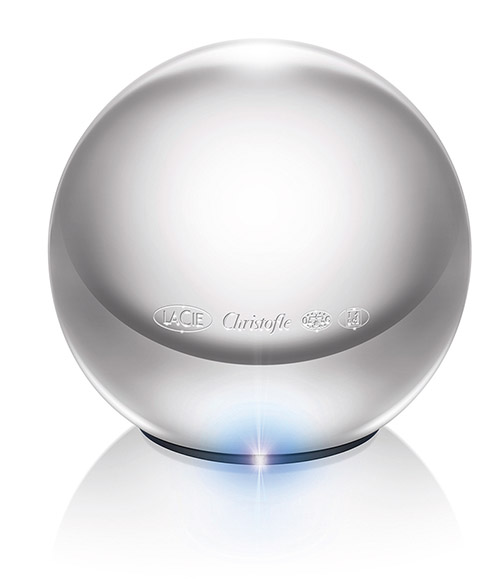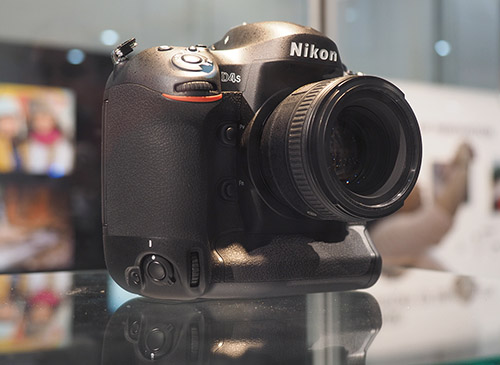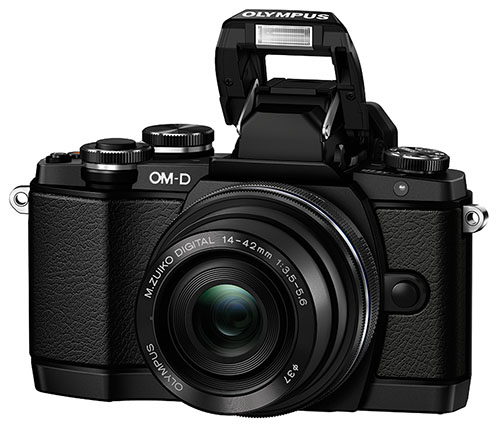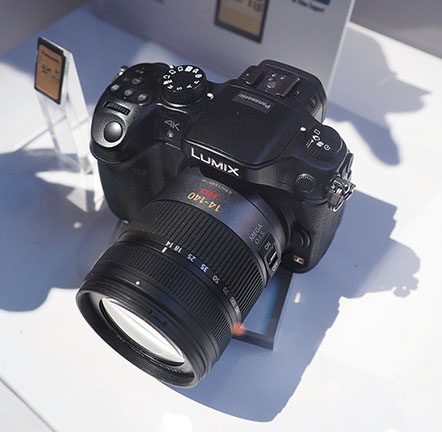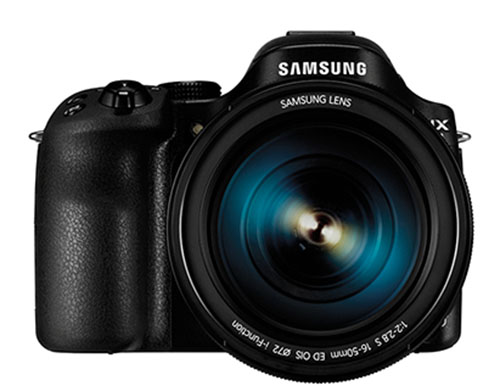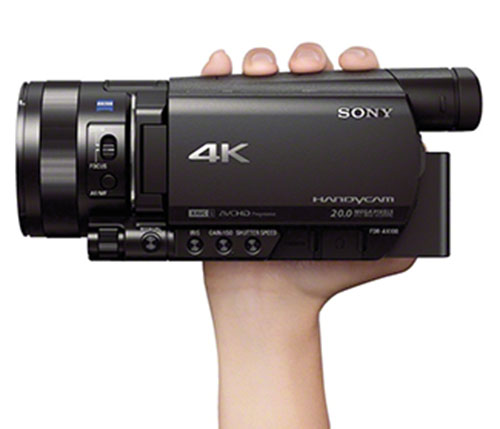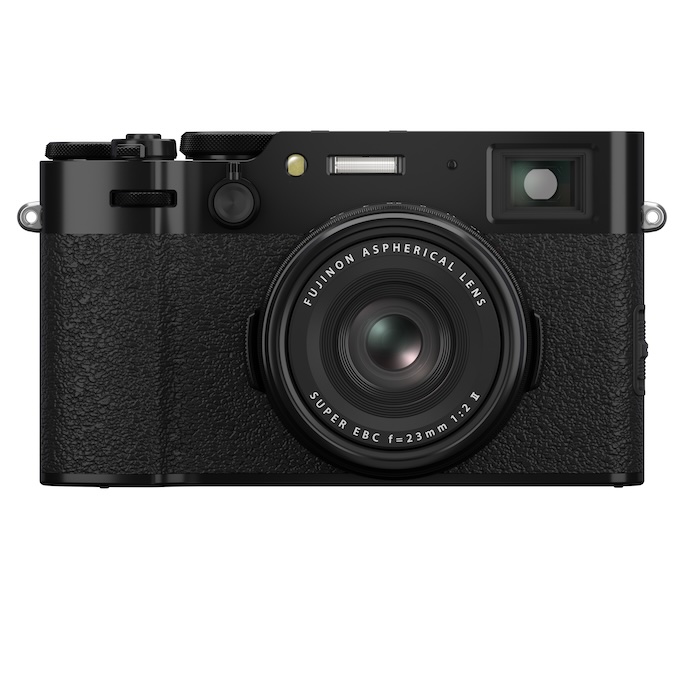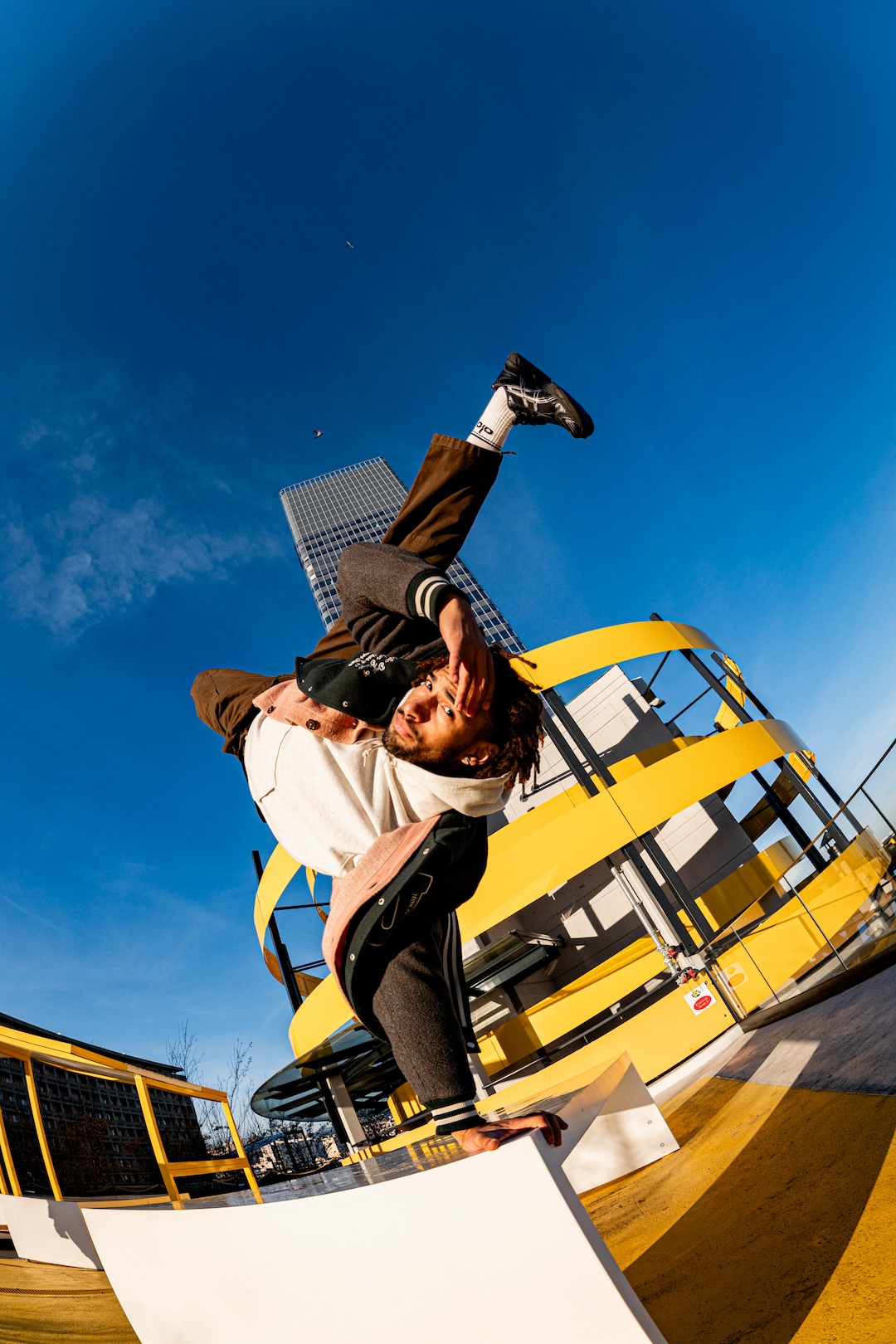This Month’s Grabable Gear: 5 Cameras, 1 Lens and a HardDrive for Good Measure
March 18, 2014
In January, I made the trek to the annual Consumer Electronics Show (CES) in Las Vegas to check out some new, some existing and some soon-to-be announced photo products. While there was no huge pro photo news, it was an interesting show nonetheless. Below are some of the cool products we found while rubbing shoulders with the other 150,000-plus attendees at this massive show.
Fuji’s Prime Lenses and XTi
Fast prime lenses have been trending for a while and Fuji showed off its latest XF-series 56mm, f/1.2R. Given its 85mm-equivalent focal length, the new lens is ideal for portraits in studio, on location and at weddings. The lens is sturdy thanks to its metal construction, featuring a new optical design with 11 elements in 8 groups. So, we’re looking at two ED elements, one double-sided aspherical element and four elements with a convex surface. Fuji promises fast (and quiet) autofocusing with this compact lens, and we especially like the feel of its aperture ring. By the time you read this, the lens has already shipped, so we won’t be surprised if photographers show up at WPPI sporting the 56mm glass lens on their X100S (now available clad in all black).
Perhaps even more exciting is what Fuji revealed behind closed doors. The latest in its X-series cameras, the XTi is built around a 16-megapixel APS-C X-Trans CMOS II sensor, utilizes Fuji’s EXR Processor II, and is equipped with Wi-Fi. The camera is water-, dust- and temperature-resistant, so it’s great for on-location shoots—as long as the lens is also weather-resistant. The camera can shoot up to 8fps continuously and is the first camera in its class to be compatible with SDXC UHS-II cards, which Fuji says will deliver approximately twice the writing speed of conventional SD cards in continuous mode.
What’s very cool about the camera is its four OLED EVF Display Modes. While Fuji’s hybrid multi-viewfinder caught our eye when it was first introduced, the XTi takes that idea to a new level. In addition to the full mode, which shows off the full benefits of the OLED viewfinder’s 2.36-million-dot and amazing 0.77x magnification, the EVF provides a “normal” view with shooting settings, a dual option for manual focusing via a split view (with digital split image or focus peaking highlights) and a portrait view (available in “normal” and “full”) that automatically rotates display information when shooting vertically. While the rest of the camera’s specifications are impressive, we think it’s the viewfinder that’s going to be the hottest feature of the XTi. Save up your cash because you’re going to want some accessories, too, like the vertical grip and weatherproof lenses.
Price: 56mm lens, $1,000; XTi, $1,300 (body only), $1,700 (with XF18-55mm kit lens)
www.fujifilmusa.com
LaCie’s Luxurious Hard Drive
LaCie announced several hard drive products at CES, but we were most taken by the unique look of the Sphère. Designed by Christofle, a company with an almost 200-year heritage in creating high-end luxury products, this gorgeous globe-shaped external hard drive was handcrafted and silvered in France. At $490, it’s pricey for a 1TB drive, but it certainly outshines (figuratively and literally) any other hard drive we’ve seen and adds a touch of class to your studio that, we think, will impress clients.
On the tech side, it’s available in only 1TB capacity but comes with a 2-year warranty, LaCie’s Backup Assistant software, private-public password protection, a blue LED to show hard-drive status and a USB 3.0 connection—which also powers the drive, so no need for clunky power cables. It’s sleek and elegant and, despite the price, makes an artful addition to your desktop.
Price: $490
www.lacie.com
Nikon’s New Flagship
Although Nikon announced the development of the D4S prior to CES, this was our first opportunity to see the camera up close. Granted, it was under glass so we couldn’t handle it, but, suffice it to say, it looks just like the 2-year-old D4—no surprise there. Nikon has been hush-hush about specs, pricing and availability but says that the new flagship model features a new image-processing engine that delivers “enhanced image quality.” The D4S also holds the promise of “more advanced autofocusing performance.” Given that last statement, don’t be surprised if you spied the D4S in the hands of photographers at the winter Olympics this past February. Of course, we’ll keep you posted as we learn more about the latest pro DSLR from Nikon.
While Nikon announced the entry-level D3300 and 18-55mm kit lens (available for $600), we were more interested in the new AF-S 35mm, f/1.8G ED SWM (silent wave motor) lens. Designed for Nikon FX cameras, this lens is perfect for low light conditions. It measures 2.83×2.81 inches and weighs a mere 10.7 ounces. At $600, you can’t afford not to add this speedy little lens to your camera bag.
Price: Nikon D4S, TBD; Nikon D3300 with kit lens, $600; Nikkor 35mm f/1.8G ED, $600
www.nikonusa.com
Olympus’ OM-D Addition
A few companies offered sneak peeks of upcoming products, and while we can’t spill the beans on all of them since embargo dates were not available, we can share the latest from Olympus. Perhaps of most interest is the OM-D EM-10, the baby sibling of the company’s very popular E-M5 and the E-M1 micro four thirds (MFT) mirrorless cameras. The latest addition to the OM-D line offers many of the same features and technology as its older siblings. It’s a great entry-level camera, with built-in Wi-Fi like the E-M1, and is the first OM-D model to offer a built-in flash. A hotshoe is available but there’s no accessory port for Olympus accessories. Still, it looks like a promising—and affordable—model for those who want a take-anywhere but capable MFT model.
Olympus also revealed a new 14-42mm, f/3.5-5.6 lens with a pancake design (making MFT cameras even more portable), a macro converter and, for those of us who lose lens caps on a regular basis, an automatic lens cap for the lens. Looking for a fast, MFT prime? Check out the new (and smaller and lighter) 25mm, f/1.8 lens.
Price: EM-10, $700 (body only); $800 (with 14-42mm lens); 14-42mm pancake-style, $350; Macro Converter, TBD; Automatic Lens Cap, TBD; 25mm, $400
www.olympusamerica.com
Panasonic’s Lens Offering
Panasonic officially “announced” the development of a 4K-capable Lumix digital still camera at the show. Not many details were—or are (at least at press time)—available, though. But there was a mock-up of the GH4 4K camera at the booth under glass, so we took some quick pictures. (At least we assume it’s a mock-up since it looks just like a GH3 badged with GH4 and 4K labels). Although there’s no release date yet, we expect to see it sometime this year, perhaps in the next few months. Given all the 4K TVs at CES from Panasonic (and others), it’s no surprise that a mirrorless camera with 4K capabilities is forthcoming.
But portrait and wedding photographers may be more interested in the new lens that Panasonic showed off: the Leica DG Nocticron 42.5mm, f/1.2 ASPH lens for MFT cameras. With its 85mm-equivalent focal length, this ultra-fast, ideal-for-portraits lens features a metal mount and optical image stabilization. Comprising 14 elements in 11 groups, the lens uses two aspherical lenses, one ED and one UHR lens, which makes this a truly appealing option for pros, especially those working in low light. Not surprisingly, its price tag reflects all of its attributes. But MFT shooters may well be willing to dig deep to buy one of these super fast lenses.
Price: $1,600
www.panasonic.com
The Compact Samsung
Samsung showed off its new 20.3- megapixel NX30 mirrorless compact system camera. Built around an APS-C-sized CMOS sensor, this camera offers advanced Wi-Fi capabilities, including easier ways to share and transfer images. It’s pre-loaded with Dropbox and supports direct upload to the Web storage service, and it has an AutoShare option to automatically send images to smart devices as soon as they’re shot. The NX30 also features NFC for no-brainer pairing with smart devices. On the photo side, the camera offers ISO up to 25,600, OIS Duo technology, a new processor, full-HD video, the ability to livestream via HDMI, a tiltable EVF, a 3-inch tiltable AMOLED touch display and up to 9fps continuous shooting. With its APS-C-sized sensor and advanced Wi-Fi capabilities, this camera’s a pretty good deal at $1,000, a price that includes an 18-55mm OIS lens, but be sure to check out the new premium 16-50mm, f/2.0-2.8 S ED OIS lens. It costs more than the camera body, but it’s dust and splash proof, offers 18 elements in 12 groups and has an Ultra-Precise Stepping Motor for super-accurate focus.
Price: NX-30 with 18-55mm lens, $1,000; “S” Premium 16-50mm lens, $1,300
www.samsung.com
Sony’s Camcorder Gets Even Lighter
We were impressed when Sony launched the FDR-AX1 4K camcorder for around $4,500 last year, but we were blown away when the FDR-AX100 4K Ultra HD Camcorder was announced at CES for $2,000. The new AX100 is a lot smaller and lighter than the AX1, and it bests its sibling’s 1/2.3 inch sensor with a larger, 1-inch Exmor R CMOS 20-megapixel sensor (14 megapixels for video capture). The AX100 features a 12x optical zoom (versus the AX1’s 20x zoom) and is equipped with Wi-Fi and NFC connectivity. Now that prices of 4K TVs are dropping, it’s time to start shooting content to fill those new flatscreens, and the AX100 may just be the perfect entrée into the 4K world.
Price: $1,999
www.sonystyle.com

